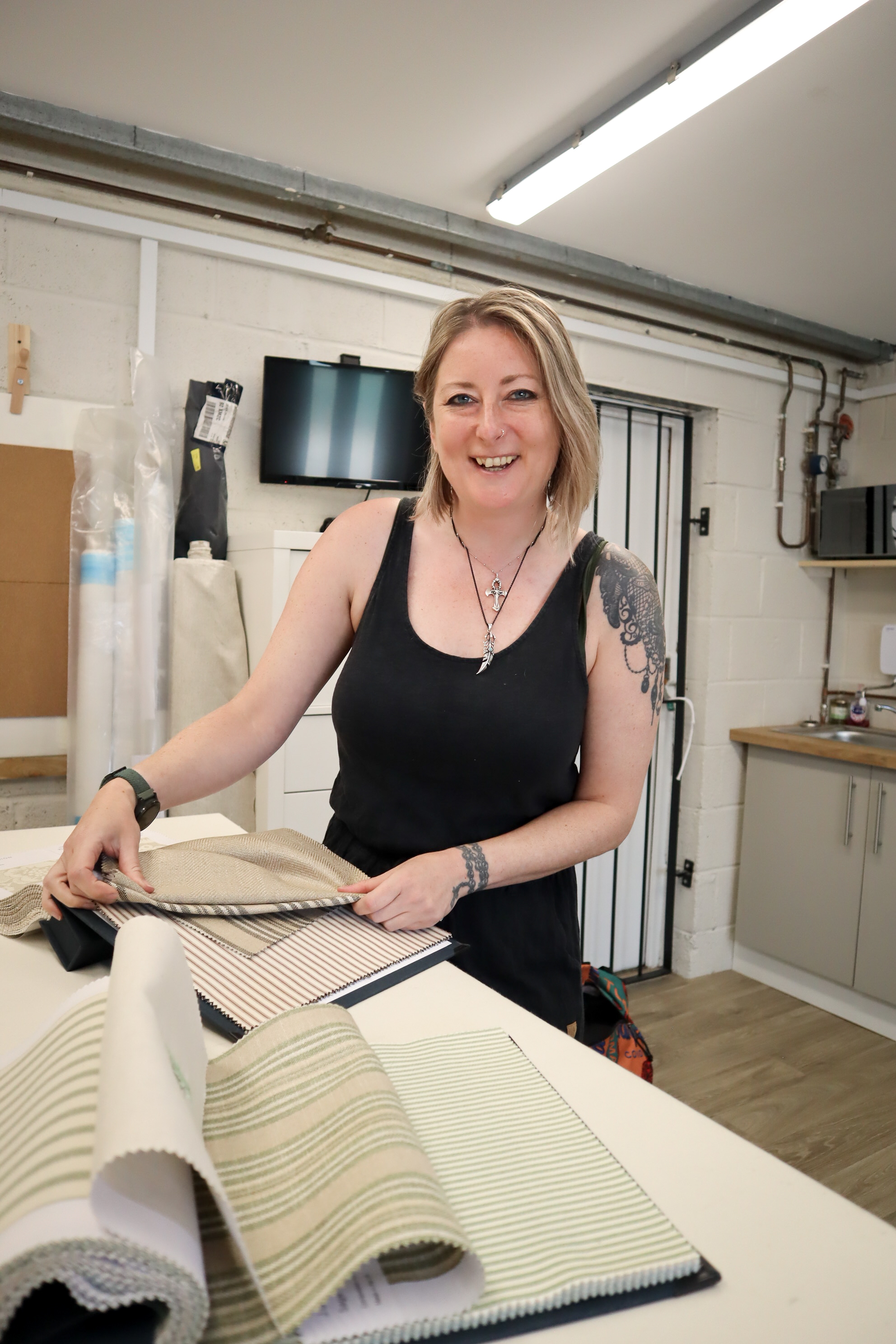
Stories
Handmade with Love
With the opening of the Tresemple Collection, near Truro, we are shining the spotlight on those people that have contributed to the design and aesthetic of this place. In the first of our deep dives, we are pleased to introduce Zenterior Design, responsible for hand making all the curtains, voiles, blinds and headboards featured at Tresemple.
Tucked away in the corner of an industrial estate in Camborne you will find the Zenteriors workshop, and inside you will find Liselle and Gaina in a bright, white, busy space surrounded by bolts of fabric, stacks of cushions and folded curtains. Gaina manages the workroom and makes the curtains and blinds in this cleverly adapted space. A fold-down table fixed to the wall enables them to create a work surface across the whole room so they can make enormous curtains. Apart from the heading pleats, curtains and blinds are hand stitched throughout. Traditional methods are used and no corners cut. Liselle describes Gaina as a perfectionist, “an absolute machine” when it comes to making curtains.
Liselle began her career in theatre set design. She then worked in home furnishing retail outlets where she gained comprehensive knowledge of making soft furnishings and became expert in curtain design. This led to eight years in a developing interior design business where she broadened her experience in all areas, from carpets to paints, wallpapers and lighting. In 2018 she took the plunge and founded her company Zenterior Design, determined to have a “sustainability first” ethos. With her broad knowledge of the trade and good relationships with local craftsmen who shared her approach, her business was profitable from its first year.
On principle Liselle uses natural fibres; linen, cotton and wool. Fabrics are sourced in the UK wherever possible though much comes from the continent. Ian Mankin, whose fabric is produced in a mill in Lancashire, and Fermoie are favourite UK producers. More manufacturers in the UK are moving towards sustainability so more quality linens are now coming out of Ireland and the UK. She avoids synthetics as far as possible though her currently preferred curtain lining material is fair trade organic cotton blended with recycled polyester which is excellent quality to work with, and reduces single use plastic. Chemicals in fabrics is another issue she is concerned about. The production of fabric from raw cotton seeds involves heavy chemical use unless it is organic, and fire safety regulations mean fabrics must reach set standards of fire resistance which is achieved by chemical treatment. However some fibres, wool in particular, are naturally fire resistant so using a wool interlining with a natural fibre over it can bypass the need for treated fabrics.
“Why sheep are fire retardant I have no idea”
Liselle’s pursuit of sustainability down to the last detail is relentless. Her first choice for fabric will always be a natural fibre and interlining is always cotton domette. Metal curtain hooks are used in place of plastic. To avoid using plastic cord-tidies she braids surplus cord like a friendship bracelet. Sundries present her biggest challenge. For example heading tapes are stiffened with plastic - why not bamboo? It is not always easy though; using brass rings in Roman blinds can mark the fabric, and wooden rods warp and are easily broken. She is constantly pushing manufacturers to come up with green alternatives. She encourages re-upholstery of good quality furniture. Though expensive it is preferable to buying a new item of comparable quality and will be exactly to the customer’s taste. The craftspeople she works with are all local, and she will only accept projects in Cornwall.
Asked if she has her own style Liselle says no – she has no brand image, her work is about the customer and their space, what they want and what they need, what they like and what will work in the space. She will advise on the smallest of projects like dividing a room, or selecting cushions, to a complete building from architect’s drawings to completion. Her background in theatre design has taught her to adapt her solutions for the style and age of a building. She has even refurbished a four poster bed originally belonging to Jonathan Couch, who was a doctor in Polperro and a naturalist referenced by Charles Darwin. Her work in the cottages at Tresemple meant taking on the baton from the original designers and continuing their theme seamlessly. Liselle feels the style has elements of “cottage core”. This trend developed during Covid lockdowns when professional designers were out of work and turned their attention instead to their own homes, making living spaces that were stylish and eclectic but remained comfortable, usable and uncluttered, and where every element is of beautiful quality. Installing pristine new soft furnishings at Tresemple was tricky. Building work was still going on at the site bringing dust and mud, tradespeople coming and going in the buildings, freshly oiled floors, and boxes stacked everywhere. Some of the linen curtains had to be folded and stored until it was safe to hang them, but by then the linen had become badly creased and required many hours of steaming. She clearly enjoys a challenge.






